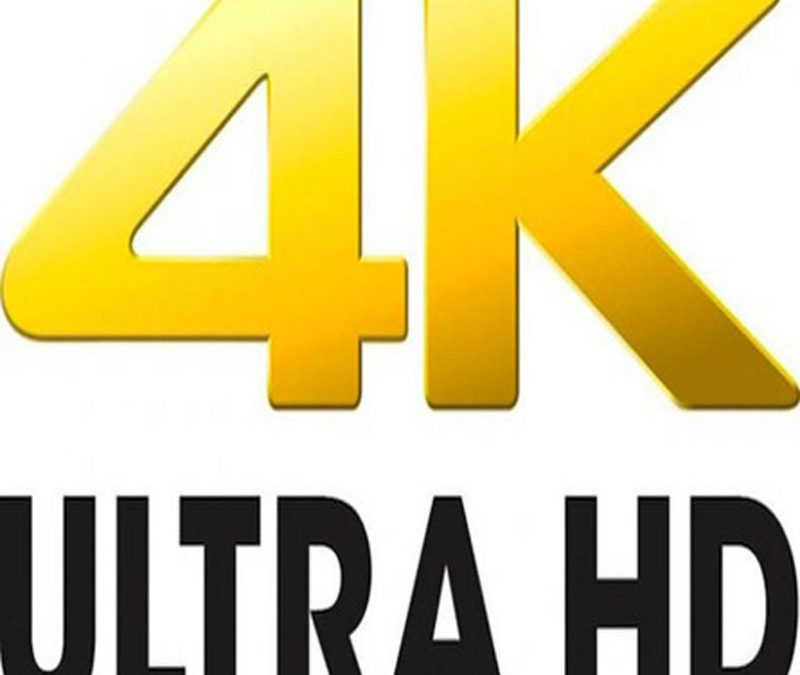*** UPDATED 8/4/22***
Back in early 2006, a new resolution standard was implemented, HD 1080p. This was driven by Toshiba and HDDVD and Sony’s Blu-ray. After two years and I am sure a lot of money, the studios sided with Sony. The industry learned that if they are going to go to the next couple level standards (4K/8K), that they could not have another format war, so the Blu-Ray Disk (BD) was standardized.
Fast forward to 2013 and the first 4K TV’s came out. Of course, they were terribly expensive and there was no content until 2015 when “The Martian” came out in 4K. Studio’s started to get on the bandwagon slowly (players were still expensive) until 2018 when the last holdout Disney (Disney, Pixar, Marvel, Lucas Films, Fox) started to release in 4K.
Since then a couple of things have happened to spur the adoption of 4K. Players have come down in price, in some cases under $100, the Xbox S and Xbox X, and PS5 have 4K players in them, and finally projectors with UHD capability for a reasonable price (under $2500), because “immersion” doesn’t really happen until you are above 80″ and 4K and higher resolutions and projection were made for each other, see our Projectors and Screens blog.
But not all 4K releases are created equal. The reasons for this are source material and who is doing the upgrade. There are two types of movies, film and digital. Film comes in several sizes, 35mm and 60 and 70mm (IMAX). According to Director Christopher Nolan, scanning 35mm results in 6K resolution and 70mm around 11K (remember 1080p to 4k is 4 times the resolution), but that 4K is the closest to being in the movie theater
Depending on who does the 4K creation (director, studio, or in some cases the director of photography) and how cleaned up the film negatives are, is how well they can get a digital scan, and how good it is coming out. The Chris Nolan “Batman Trilogy” is considered a reference level 4K series, because there is a noticeable difference between someone who cares about how the film looks versus just applying a resolution change. This is the issue with some 4K upscale from a digital source, as it can make little difference in the viewing or quality (this is why you don’t buy 4K of cell drawn cartoons, why bother save the money).
Now some directors have not released their movies in the 4K format (sometimes not even blu-ray. I’m talking about you James Cameron) and ones they had, were poor quality transfer.
That aside, there is another factor involved in 4K movie creation, and that is of special effects. Up until 2022, visual effects were created (since the time of “The Phantom Menace”) in what is known as a “2K digital intermediary”, that meaning the visual effects were done at twice the 1080p resolution so on 1080p they are unnoticeable, but in 4K, depending on how well the editing is done, can be very apparent. One “solution” is to run the entire film at 2K resolution, then upscale it to 4K, making it overall watchable, but when put side by side with a true 4K image, is noticeable.
The other thing with a 4K movie is it gives the director the opportunity to improve the audio, not only in quality, but by using Dolby’s object oriented sound program, Atmos. This allows the sound designer to place audio parts anywhere in 3 dimensional space, and when you have the speakers in the correct positions in your room, it takes advantage of those objects, like a plane flying over head, or a fly buzzing around your ears. More of that immersion.
I have been writing about physical media, that gives you the best, uncompressed audio and video at the full 20Gbps rate with the best color range. There are two other types of media: Broadcast TV and internet streaming. Broadcast TV is done in HD (720p to 1080p). Rarely, except maybe sporting events, is it broadcast in 4K. The reason is the broadcast spectrum and money. A network in a given broadcast region is allowed a certain part of the electromagnetic spectrum. With it can can have a) One 4K signal, b) four 1080p signals, or c) eight 720p signals. Equipment is also cheaper for the lower resolutions. The major networks, CBS, ABC, NBC, PBS broadcast in 720p generally. Fox broadcasts in 1080p. Streaming has come on strong over the past several years, especially during the pandemic, with the release of Disney+ and HBOMax. Netflix, Amazon Prime, Paramount+, Peacock, Hulu, Disney+, and HBOMax being the major players in streaming. Purchased digital movies (or ones included with physical media) reside primarily on Vudu and Movies Anywhere. ALL STREAMED MOVIES AND TV SHOWS ARE COMPRESSED BOTH VIDEO AND AUDIO. The amount of compression depends on your internet speed and if it is too slow, it will drop down to a lower resolution. Most estimates are a 40Mbps line is needed for a single 4K streaming device and faster if you have more traffic on your line (online video gaming, multiple video streaming devices). Since the standard for 4K audio video is 18Gbps, there must be compression in order to be able to stream without stuttering. This is why if you want the best audio and video, physical media is the best.



Recent Comments